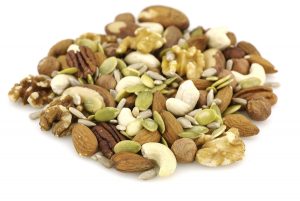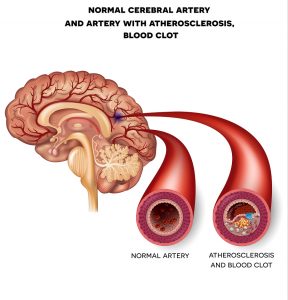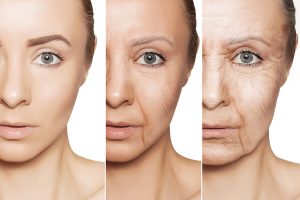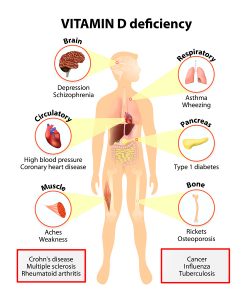There are fewer carcinogens in organic food, which is likely why consumption of organic food reduces cancer risk. In an extensive study from France a large number of patients received questionnaires about their organic food intake.
The study was also reviewed by CNN using more popular language to describe the findings.
The French study showing that consumption of organic food reduces cancer risk
68,946 French adults were recruited for the study. More than ¾ of the study population were women in their mid 40’s. Researchers divided these subjects into 4 groups depending on how many of 16 organic food groups they were consuming.
First of all, the type of foods included fruit and vegetables, ready-to-eat meals, meat and fish, vegetable oils and condiments, dietary supplements and other products. Also, the investigators followed this population for an average of 4 ½ years. Finally, during that time 1,340 cancers developed. 459 breast cancers occurred, 180 prostate cancers, 135 skin cancers, 99 colorectal cancers and 47 non-Hodgkin lymphomas.
Most noteworthy, those who ate the most organic food developed 25% less cancer on average. When it came to Hodgkin’s lymphoma, organic food consumers developed 73% less of it than people on regular food. Postmenopausal breast cancer was 21% less frequent among those who had the highest use of organic food.
There are a number of factors regarding non-organic food that should make us pause to think.
Antibiotic use in agriculture
Milk and milk products are not as innocent as in the past when no marketing boards were around. Animals are no longer freely roaming on green pastures, but they exist in high-density facilities and they need antibiotics to prevent infectious illnesses. So the story goes. In reality farmers have found out that antibiotics and bovine growth hormone will both increase milk production. The manufacturers apply the profit principle and the result is that the consumers of milk and milk products have a change of their bowel flora from the antibiotic residues, which can cause heart attacks. The bovine growth hormone from milk and milk products causes breast cancer and prostate cancer. If you buy organic milk and milk products, you will not consume bovine growth hormone or antibiotic residues.
Immune disruptors
We know for several decades that insecticides used in agriculture on a large scale are accumulating in the body of the consumer and act as immune disruptors. The farmer feels he has to defend his crop against insects and sprays with various insecticides. Among the fruit with heavy spray residues are strawberries and apples.
Heavy metals
A study of the Consumer Reports’ from August 2018 examined baby foods. High levels of heavy metals like mercury, lead, arsenic and cadmium were detected in baby foods. Exposure to even low levels of heavy metals can lower a child’s IQ by 5 points. Heavy metals have shown an association to behavior problems, to autism and to causing attention deficit hyperactivity disorder (ADHD). A study from New Zealand looked at how people who were exposed 4 decades earlier to heavy metals were doing when having an average age of 38 years. 565 New Zealanders showed measurements of high levels of heavy metals as children. Their IQ’s were lower than the average for their age and their socioeconomic status was below that of their parents.
Arsenic levels also high in organic food
It seems like heavy metals were high in both non-organic and organic baby food samples. Arsenic rice comes from inadvertent, but deliberate human poisoning. The Consumers Report explains that high arsenic values showed up in rice grown in these states: Arkansas, Louisiana, Missouri, and Texas. These are the same states, where cotton plantation covered the countryside in the past. The U.S. has been the world’s leading user of arsenic. Since 1910 farmers used about 1.6 million tons for agricultural purposes. Since the mid-1960’s they used only half of this amount. Although there was a ban of arsenic use as an insecticide in the 1980’s, residues from the decades of previous arsenic use still linger on in agricultural soil today. If organic rice is grown in these 4 contaminated states, it is not unexpected that even organic rice would contain high levels of arsenic.
Rice grown in previous cotton plantation areas contaminated by arsenic
The south-central region of the US was an area where cotton was the mainstay of agriculture for a long time. This is a crop where heavy treatment with arsenical pesticides was in use for decades in an attempt to combat the boll weevil beetle.
Rice was particularly high in arsenic, both in baby food as well as in adult food. Basmati rice from California, India, and Pakistan had on average half the amount of arsenic. Sushi rice from the U.S. was also low in arsenic.
Arsenic in chicken
A subsidiary of Pfizer produced the arsenic-containing drug, Roxarsone. This is an organic arsenic compound that accumulates in the liver of chickens. A synonym for Roxarsone is “3-nitro”. The full chemical name is 3-Nitro-4-hydroxyphenylarsonic acid.
When you read the fine print of the FDA website, it reveals that originally it allowed 3-Nitro® to be marketed in 1944 based on negative toxicity studies on rodents. The drug was approved again in 2009 for combination use with other drugs for suppression of coccidiosis, a cause of diarrhea in chickens. As 3-nitro is an organic arsenic compound. Researchers in the past believed that it would be non-toxic. So, the assumption was that it was safe to allow this feed supplement for chickens. It turns out that with more sensitive newer testing methods scientists from the FDA’s Center for Veterinary Medicine (CVM) and Center for Food Safety and Applied Nutrition (CFSAN) examiners found that organic arsenic compound metabolize in the chicken into cancer-causing inorganic arsenic compounds.
Chicken farmers use arsenic compounds to stimulate growth and to prevent the transmission of infectious diarrhea. If you don’t want to be a victim of the industry, I suggest you switch to organic chicken. It will be arsenic-free.
The “dirty dozen”
Originally the most polluted fruit and vegetables were termed the “dirty dozen”, but now the list is longer and includes 15 of the most polluted crop. They are: apples, peaches, nectarines, strawberries, grapes, celery, spinach, sweet bell peppers, cucumbers, cherry tomatoes, sugar snap peas (imported), potatoes, hot peppers, kale, and collards.
It is common knowledge for some time that certain foods contain more pesticide residues than others. Some of these fruit and vegetables contain between 13 and 15 different pesticides from spraying. Potatoes rank on top of all of the crops with high contamination.
Why is it important to know which crop has high pesticide contamination? Pesticides are immune disruptors. On the one hand vegetables are healthy for us, on the other hand they contain residues from insecticides and herbicides that have estrogen-like activities called xenoestrogens. They are are causing breast cancer in women and prostate cancer in men. If you replace all of these highly contaminated fruit and vegetables with organic ones, you will have reduced your cancer risk by 25%!
GMO foods and Roundup
It is interesting that there is no law in the US and in Canada that GMO foods should have a label declaring that it is genetically modified. This is changing rapidly as people realize that in many countries of Europe all GMO foods require labeling. Here is a publication that shows that the GMO labeling campaign is gaining momentum.
Genetically modified corn and soy contains the Bt toxin; it has been found in babies as mentioned in this article. Bt toxin damages the small bowel (the ileum) through Cry1Ab (the protein produced in genetically modified corn and soy). This in turn disables the absorption of vitamin B12. We know that this in turn will cause anemia. Historically the cause of pernicious anemia was due to a lack of vitamin B12 absorption.
Effects of Roundup
In a publication dated April 2013 Drs. Anthony Samsel and Stephanie Seneff discuss the effects of Roundup. They noticed that glyphosate inhibits the cytochrome P450 (CYP) enzymes in the liver. This is a crucial detoxification enzyme complex. When toxicity studies of glyphosate in mammals emerged, this was not common knowledge. The CYP enzymes in the liver are important to metabolize and eliminate estrogens and also help to detoxify xenobiotics, which are estrogen-like substances (residues from insecticides). Thus glyphosate (=”Roundup”) amplifies the damaging effect of environmental toxins and chemical residues from non-organic food that we eat. Researchers have shown a build-up of estrogens and xenoestrogens that are responsible for the development of many cancers (atypical Hodgkin’s lymphoma, breast cancer, prostate cancer, colon cancer etc.). Based on this data it makes sense to switch to as much organic food as you can afford. At least stay away from the “dirty dozen”!
Changing over to organic food, as consumption of organic food reduces cancer risk
If you want to avoid Roundup, xenoestrogens and GMO foods, you need to switch from regular foods to mostly organic foods. Throw out all the foods in your fridge that are not organic and that contain MSG in it’s many disguises. MSG is an excitotoxin, which kills brain cells. These suggestions are also what Dr. Paula Baillie-Hamilton is recommending.
Organic foods do not contain any of the problematic GM foods. They are free of rBGH, xenoestrogens, residual herbicides or residual insecticides. Switch to either organic milk and milk products or goat milk and goat milk products. Another choice would be “milk” products based on pea protein, but not on soy protein. As fatty tissue releases some toxins, it is advisable to use psyllium seed husks as a fibre source supplement to bind the toxins in the gut for elimination.
Conclusion
A French study involved 68,946 French adults; the researchers observed them for an average of 4 ½ years. They were divided into 4 groups depending on how many of 16 organic food groups they were consuming. During that time 1,340 cancers developed. 459 breast cancers occurred, 180 prostate cancers, 135 skin cancers, 99 colorectal cancers and 47 non-Hodgkin lymphomas. Consequently, the researchers found that those who were eating the most organic foods developed 25% less cancer on average.
When it came to Hodgkin’s lymphoma, organic food consumers developed 73% less of it than people on regular food. Postmenopausal breast cancer was 21% less frequent among the highest consuming organic food group.
Switching to organic food
I explained in detail how these cancer statistics come from traces of arsenic in chicken and rice, xenoestrogens from pesticide residues in non-organic vegetables, heavy metals, GMO produce and Roundup. It is time to take food seriously and switch to organic food. I have done this since 2001. Read labels carefully. Manufacturers often use the term “natural” to give a product a virtuous gloss-over. If you find that not all fruit or vegetables are readily available as organic produce, stay away from the “dirty dozen” and make use of the “clean fifteen”. You have a good variety to choose from: sweet corn, avocados, pineapples, cabbage, onions, frozen sweet peas, papayas (as long as they are not genetically modified), asparagus, mangoes, eggplant, honeydew, kiwi fruit, cantaloupe, cauliflower and grapefruit.















